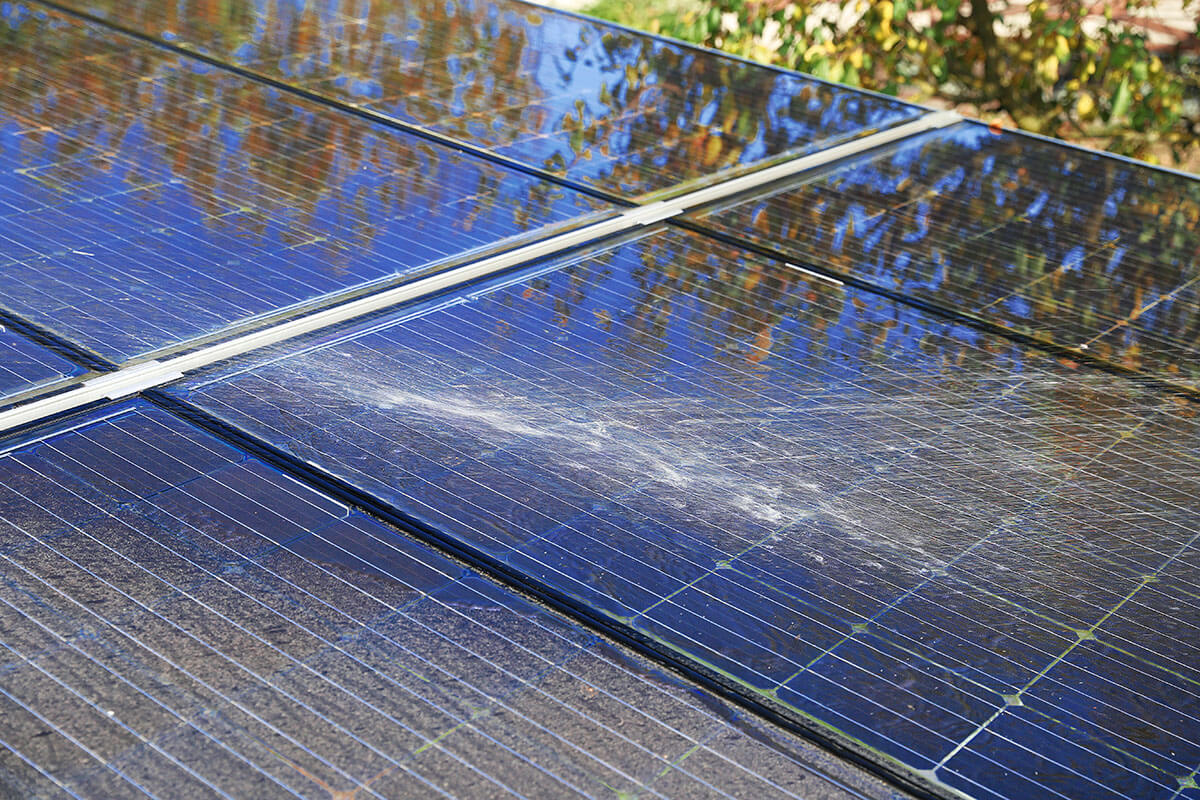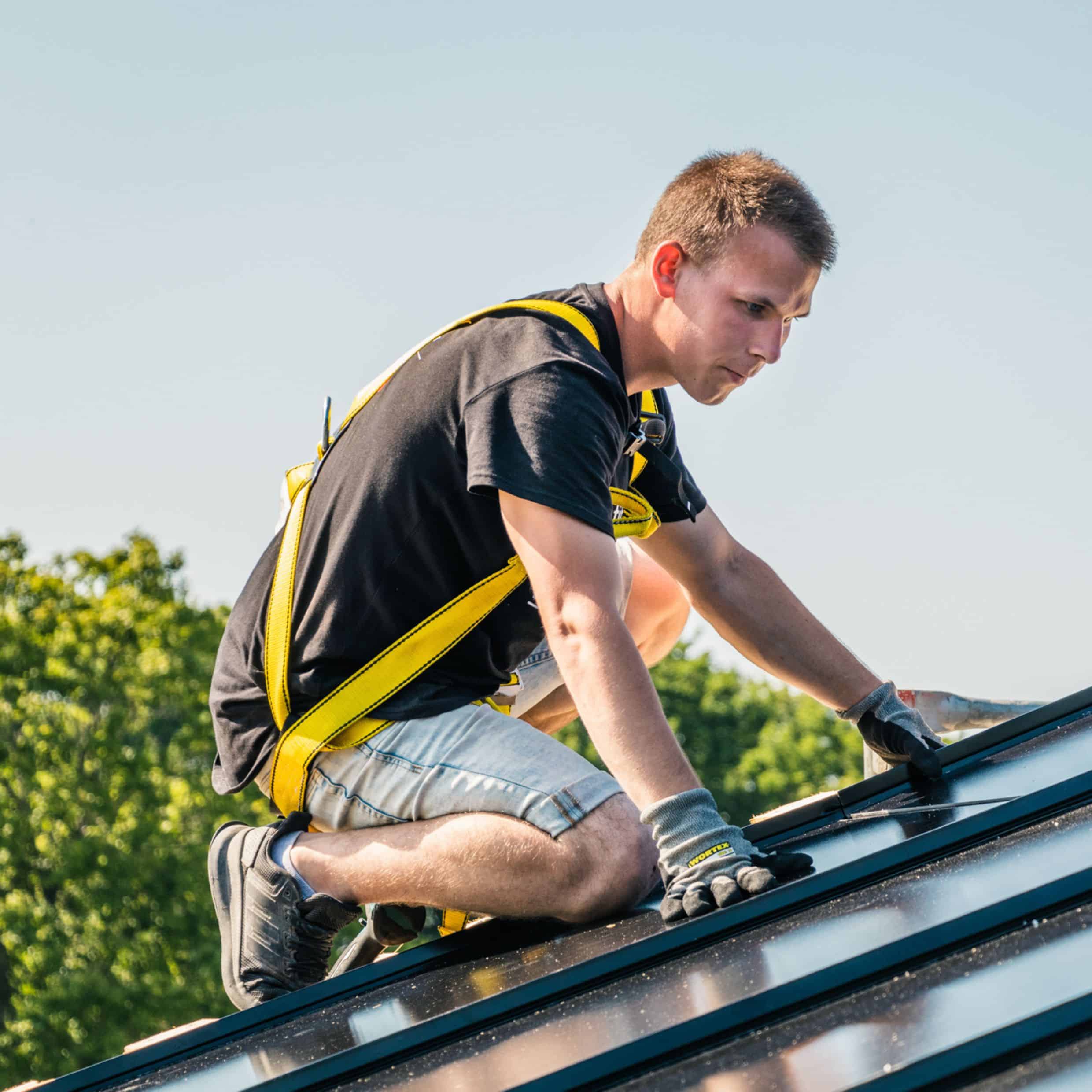
Similar to machinery and electronic devices, solar panels can’t perform at 100% capacity for their entire operational time and become less effective as time goes by. So, why do solar panels degrade? There are various factors that affect the degradation speed and rate of solar panels. Some of them are related to manufacturing while others are connected to weather, installation, or maintenance of the solar system.
What is solar panel degradation?
As time passes, solar cells gradually lose the ability to harvest solar energy and they become less effective than before. This phenomenon is called degradation. Generally, solar panels have a warranty of 25-30 years, but rooftop solar systems can last longer, depending on the quality of the components, the design, and maintenance. On average, a quality solar panel degradation rate is 0.5-3% annually during its entire lifespan.

Degradation types
- Age-related degradation – Ageing is the main factor in the solar degradation process. This is the natural wear and tear of solar panels over time as they are exposed to different weathering conditions like heavy rain or snow, ice, hail, strong winds, and high temperatures. Such factors can cause frame corrosion, the hardening of the crystalline silicon, and cell contamination. Some weathering conditions can also cause microcracks on the surface of the panel. Due to these microcracks, the electrical connections collapse in the panel which influences the output of the solar energy system. However, incorrect handling, installation, and maintenance of the products can also cause microcracks.
- Light-Induced Degradation (LID)– LID occurs once the solar system is installed and exposed to the sun for the first time. As a result, the photoconductivity of the panel is reduced. LID is also called an initial degradation and the efficiency of the panels at this stage is reduced by 1-3%. Afterward comes the power stabilization, indicating a lower rate of performance decline in subsequent years of use. Due to the fact that sunlight is one of the key factors causing the degradation of solar panels, manufacturers add UV blockers to protect solar cells from the radiation of the sun.
- Potential-Induced Degradation (PID) – PID refers to degradation induced by high voltages and it takes place when different components in the solar panel operate at different voltages. This disruption causes voltage leaks, reducing the amount of electricity the panel can send to the inverter. Panels affected by PID contain non-functional black cells, usually found near the frame. This happens due to the massive flow of electrons through such solar cells and the difference of voltage across the panel. This type of degradation doesn’t happen often, but when it occurs, it can reduce a panel’s performance by 30% or even more.

Other factors that contribute to the degradation of solar panels
- Quality – Low-quality components in a solar panel can result in a number of problems like reduced efficiency, increased maintenance costs, and reduced lifespan. Another side is the quality of assembly because not all materials might work well together if they are not put together in a proper way. For this reason, it’s always safer to go for a certified, high-quality solar provider.
- Installation – Improperly installed panels can cause various electrical hazards ranging from fires to electrocution. Even though solar panels are robust and built to withstand pressure, they might be affected during a rough installation process. This can cause microcracks and increase the risk of water ingress and corrosion, which could lead to system failure. Also, If your system is not wired up properly then you can expect problems with overall performance and efficiency.
- Maintenance – Dust accumulation on the glass may reduce power output and even cause regional hotspot effects. Industrial emissions or bird droppings may also affect, and the degree of severity depends on the transparency of the foreign objects. Therefore, it’s crucial to regularly inspect your solar panels. It is also necessary to occasionally check the connections, cabling, and inverters to ensure they are not loose or broken. By doing so you will get maximum output out of your solar system and avoid future complications.

How to increase the lifespan of a solar system
Degradation is a normal, unavoidable part of owning solar. Nothing lasts forever, but the lifespan of your solar energy system can be extended if you choose a high-quality product and service from a reliable solar provider.
In general, cheap components are of a lower quality than more expensive products. While cheap panels look more financially attractive, they can become quite costly in the long run if the failure rate is higher and replacement is required. So when you’re choosing solar, keep in mind that the price should reflect this difference.
Another thing to remember when considering getting solar panels is to make sure you are working with certified industry experts that are well-aware of proper installation techniques. This way your system will work at the highest efficiency rate and last even beyond its life expectancy.
Periodic maintenance checks and cleaning can also help to prolong the operational time of solar panels. However, it’s important that you work with products and companies that practice proper methods of cleaning and maintenance. Otherwise, more harm than good could be done to your solar power system.